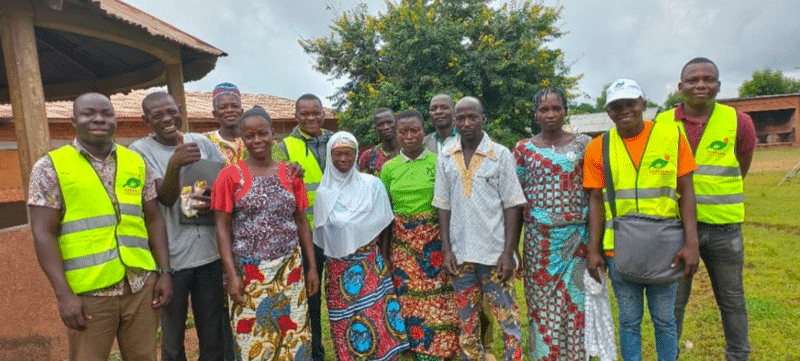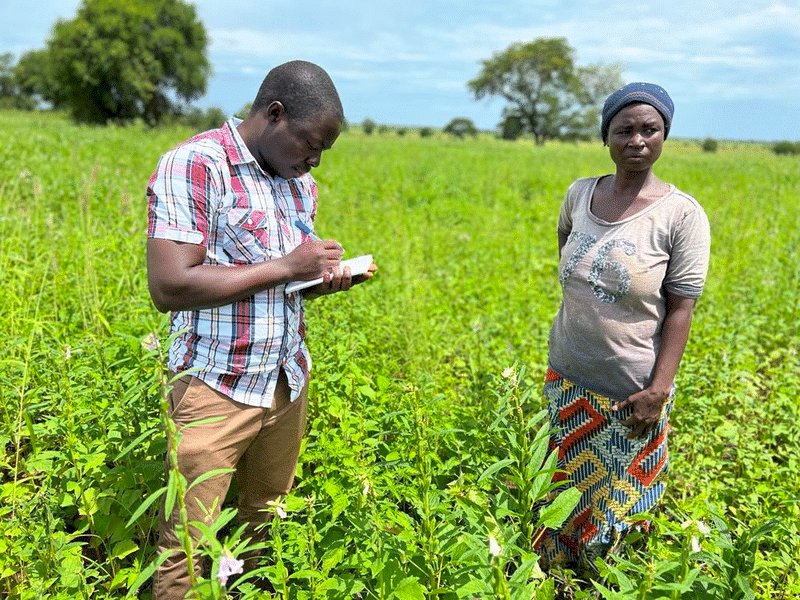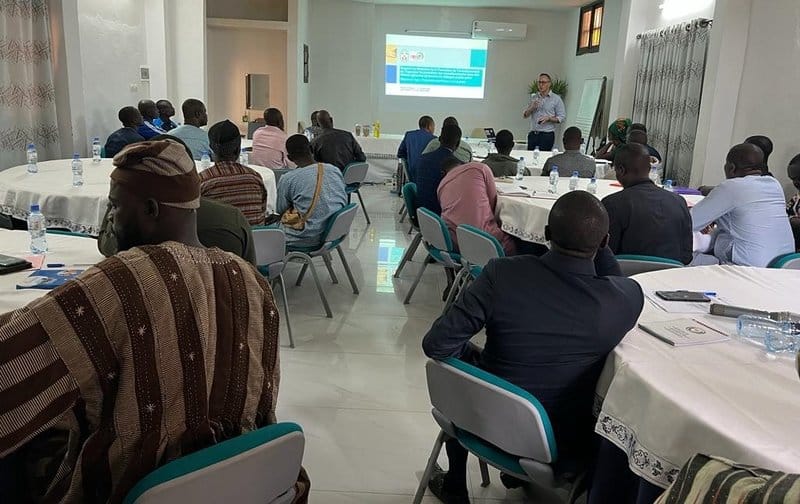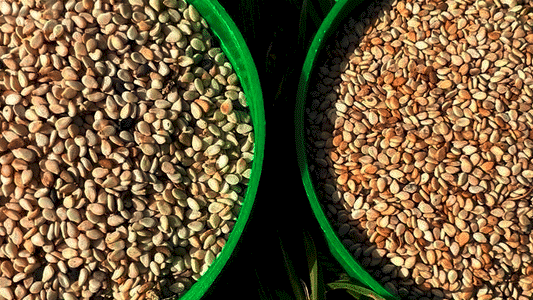Sesame is a tiny seed that has been used for thousands of years, from ancient civilizations to modern-day. Ancient Babylonian and Assyrian texts dating back to 4000 years ago mention it as a crop cultivated for its oil. In Chinese literature, sesame oil has been referred for its use in cooking, medicine, and even in lamps. Sesame oil was also a prized commodity in ancient Egypt and was used in religious rituals, even as a preservative for mummies.
Sesame was important 4000 years ago and still is for countries like Togo. With roughly 25,000 tons produced in Togo annually, sesame provides employment opportunities for a growing number of farmers and small entrepreneurs in the country. Despite this, many farmers and entrepreneurs in the sesame sector are facing challenges that prevent them from fully benefiting from the opportunities it offers.
To support the sector, the MINISTRY OF INVESTMENT PROMOTION AND THE MINISTRY OF AGRICULTURE, LIVESTOCK, AND RURAL DEVELOPMENT WORKED WITH THE ICR FACILITY WITH THE OBJECTIVE OF IMPLEMENTING A CLUSTER DEVELOPMENT APPROACH FOR THE SESAME SECTOR.
The intervention was implemented in three phases:
Mapping the cluster
The initial step was to map the cluster through a workshop involving relevant stakeholders from the sesame sector. This provided a chance for government and private sector to share their input, knowledge and expertise on the bottlenecks, opportunities and relevant actors of the sector.
Subsequently the ICR team conducted visits to the field and interviewed stakeholders across Togo’s main production zones for sesame, namely the Kara and Savanes regions. This phase of the intervention also included a comprehensive review of the global sesame industry to identify trade, markets, and consumer trends.
Despite being a modest sesame player in West Africa, Togo has natural and pedoclimatic conditions that are conducive to sesame cultivation, a talented and diverse community of farmers and related professionals, and deep-water port infrastructure that connects to major markets. However, difficulties persist in the sesame sector, with interviewees citing important challenges such as a lack of inputs, information, formal pre- and post-harvest training, and support for entrepreneurship and professionalization of their activity.

Figure 1: Interviewing the cluster’s stakeholders across the Kara and Savanes regions. Source: Competitiveness

Figure 2: Data collection. Source: Competitiveness

Figure 3: The findings were presented to the cluster agents in the city of Kara. Source: Competitiveness
Building the strategy for the cluster
The second phase of the project focused on building a strategy for the sesame cluster in Togo to compete effectively. To accomplish this, the team utilized various tools, including THE CLUSTER DIAMOND MODEL[1], to identify the determinants of competitiveness that Togo could develop and leverage to promote the development of the sesame industry.
[1] The Cluster Diamond Model, is a framework for understanding the factors that contribute to the competitiveness of a particular region or industry cluster. It consists of four factors: factor conditions, related and supporting industries, firm strategy, structure, and rivalry, and demand conditions.
As part of the intervention, the team also organized consultations to learn from experts in the sesame industry and assessed best practices worldwide. It also engaged with academic centers and industry leaders from Israel, Sweden, the Netherlands, and the UK. These experts shared their experiences, ideas, and shaping trends in the industry, allowing the consultants to validate hypotheses and develop an action plan for the sesame value chain in Togo.
The action plan
The first area of the plan aimed at establishing a support platform for sesame exports and products to improve their performance on foreign markets. It should focus on identifying attractive commercial opportunities, addressing gaps between local production capabilities and market requirements, and providing technical assistance to overcome limitations in accessing foreign markets. The activities will be divided into two phases: preparation, which involves identifying local conditions and analyzing customer needs, and implementation, which focuses on supporting Togolese exporters to meet market requirements and materialize sales.
The second area is the implementation of the Good Agricultural Practices (GAP) to meet the demand of international markets which require availability of healthy niche products like sesame throughout the year. Sustainable agriculture practices should also be integrated into GAP to cater to the demand for specialty and higher-quality markets that value environmentally-friendly and socially responsible products.
The third area proposes the transformation of agricultural products to increase their value and revenue. Transforming products extends the sales period for perishable items, creates added value, helps reach new customers, and allows for the utilization of by-products. However, it requires expertise and proper equipment. The first step is to acquire equipment for sesame seed decortication, which can be shared among small producers who cannot afford it individually. Successful implementation can lead to the replication of the process for sesame seed roasting, which can create even more valuable products.
The action plan also proposes fostering the PARTICIPATION OF WOMEN (SEE OUR BLOG POST) in the value chain. Women play a vital role in the sector where they contribute significantly to areas such as food production, processing, and marketing. It is crucial to ensure that women have equal access to resources, services, and opportunities.
The future
With abundant natural and human resources, Togo has the potential to further capitalize on industries like sesame as a key driver for economic growth, job generation and women’s economic empowerment. The ICR intervention proposed a pathway to develop and reinforce Togo’s sesame industry. By providing a comprehensive assessment of the sector’s strengths and weaknesses, as well as an actionable, measurable and time-bound action plan, the intervention may pave the way for a cluster development approach that can help farmers and entrepreneurs overcome the challenges they face.
This publication is part of an intervention supported by the Investment Climate Reform (ICR) Facility. The ICR Facility is co-funded by the European Union (EU), the Organisation of African, Caribbean and Pacific States (OACPS) under the 11th European Development Fund (EDF), the German Federal Ministry for Economic Cooperation and Development (BMZ) and the British Council. The ICR Facility is implemented by GIZ, the British Council, Expertise France, and SNV. The contents of this publication are the sole responsibility of the author and do not necessarily reflect the views of the donors or the implementing partners.
